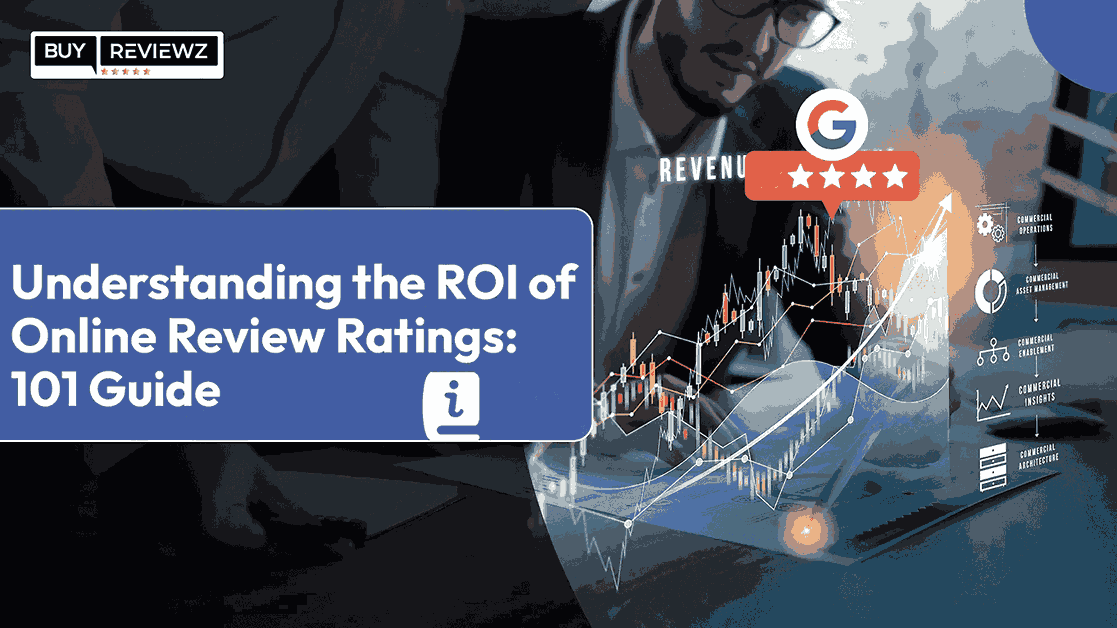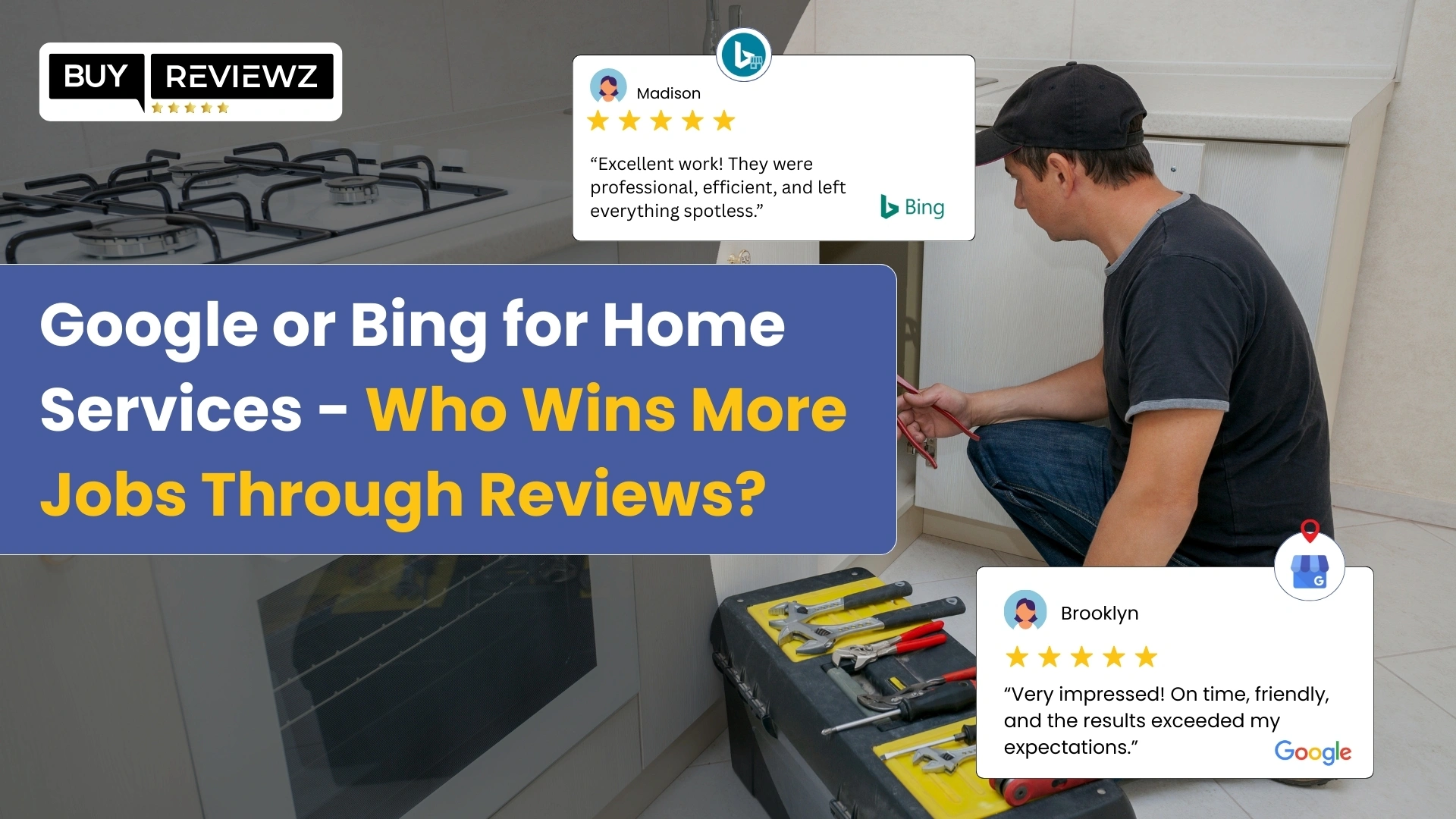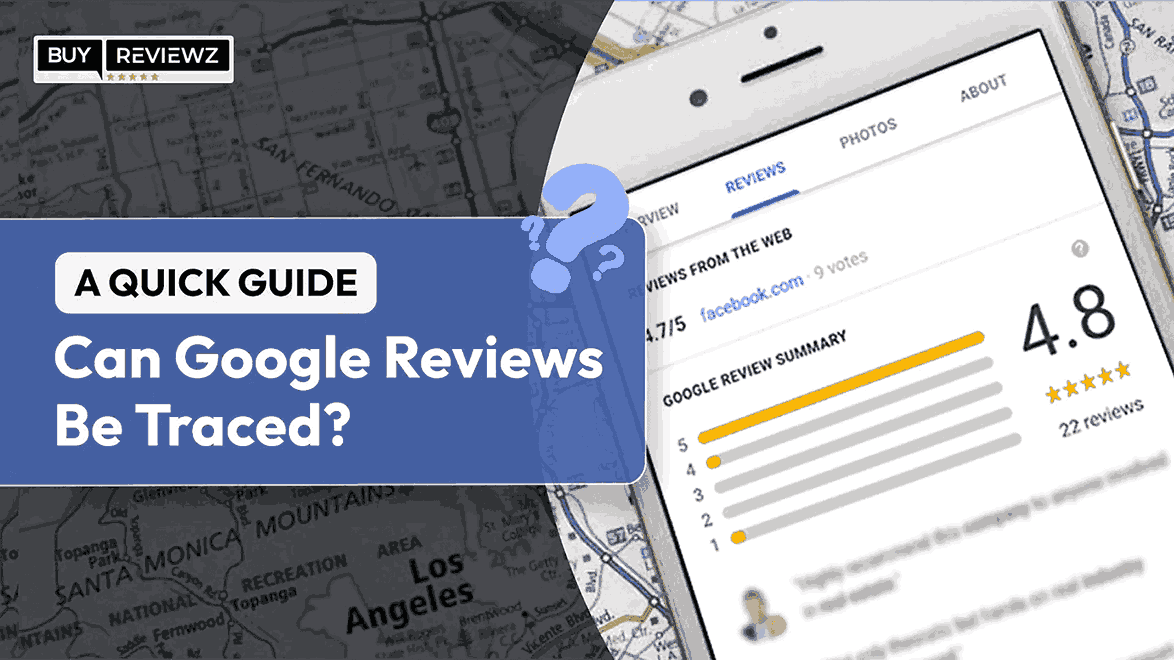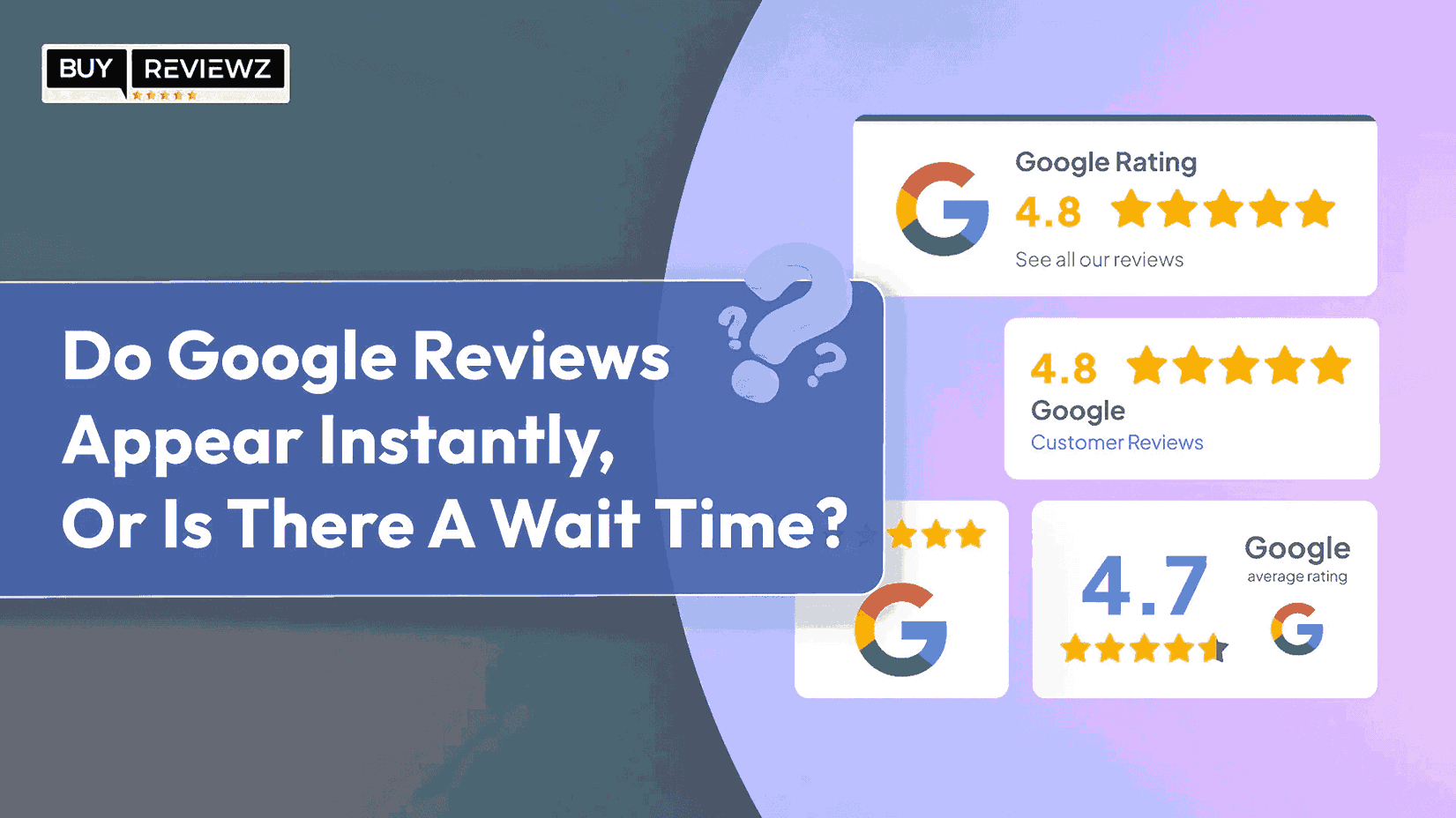Imagine customers walking into your store, ready to buy based on the online reviews they just read about your business. It sounds like a dream, right?
Reviews are like digital currency in today's world. Studies show customers are 31% more likely to spend at a business with excellent online reviews. That's because 88% of customers trust online reviews as much as personal recommendations. So, have you considered the financial impact of your online reputation beyond the good vibes?
This "101 Guide" will tell you how online reviews impact ROI and help you understand the different strategies you can adopt to unlock their true potential. You’ll learn how to get more Google reviews or even buy Google reviews if you need an immediate boost.
We'll explore the tangible benefits these ratings bring, from boosting your SEO and local ranking to building trust and driving sales.
Impact of Online Reviews: Key Statistics and Metrics
Forget handshakes and whispers – the modern customer voice roars online! In the digital age, reviews have evolved into a powerful force, shaping businesses large and small. Forget personal anecdotes – cold, hard data screams the truth:
1. Consumer Reliance:
- 93% of consumers read online reviews before making a purchase decision. This means reviews have become crucial in building trust and influencing buying behavior.
- 79% of users trust online reviews as much as personal recommendations. Reviews hold credibility comparable to word-of-mouth, making them incredibly influential in customer journeys.
2. Conversion Impact:
- A 1-star increase in Google My Business rating can lead to a 7% increase in conversions. This highlights the direct correlation between positive reviews and higher sales.
- Customers are prepared to pay 31% more for a business with top-notch reviews. Positive reviews reinforce high-value perception and increase willingness to spend more.
3. SEO and Visibility:
- Getting positive online reviews is key for local SEO—it's in the top three factors. If a business gets more positive reviews, it shows up more in local online searches.
- Star ratings on listings boost click rates by 30%. Stars ratings catch attention, and that makes people more likely to click.
4. Beyond Sales:
- Answering negative reviews can make customers 33% happier. If a business deals with review issues, it shows they care about their customers.
- People who write a review tend to buy again—seven times more likely, in fact. Reviews help build customer loyalty and long-term bonds.
5. Metrics to Track:
- Review Volume: Tracks the overall number of reviews you receive, indicating engagement and brand awareness.
- Average Rating: Reflects the overall sentiment towards your business; higher ratings mean people see your business in a good light.
- Review Sentiment: Analyzes the emotional tone of reviews, revealing areas for improvement or celebration.
- Review Source Distribution: Identifies which platforms customers use to leave reviews, helping you focus your efforts.
- Review Response Rate: Measures your responsiveness to reviews, both positive and negative.
By tracking these key metrics and understanding the impactful statistics surrounding online reviews, businesses can unlock a treasure trove of insights to:
- Make data-driven decisions about their review management strategy.
- Identify areas for improvement in customer service, products, or overall experience.
- Measure the true ROI of their online reputation management efforts.
Remember, reviews are not just words on a screen but powerful data points reflecting your customers' voices. Leverage the insights they offer to cultivate a thriving online reputation and unlock the full potential of your business.
101 Guide To Understand The ROI Of Online Review Ratings
Online reviews are more than just words on a screen – they're digital currency for your business. They affect choices, foster reliance, and mold a brand's image. Yet, knowing their actual ROI can be complex.
Let's explore reviews' positive and negative sides, unveiling their ROI capacity.
#1. The ROI of Positive Online Review Ratings
Positive online reviews are more than just a pat on the back – they're a powerful driver of revenue and growth for your business. Here's how they deliver a strong ROI:
- Direct Revenue Growth:
Studies show people spend 31% more with businesses boasting positive reviews, translating directly to increased sales. Higher average star ratings allow businesses to charge 11% more per point increase, maximizing profits on each sale.
Positive reviews encourage website clicks and purchases, turning online recognition into real revenue.
- Customer Acquisition & Retention:
Positive reviews act as social proof, boosting trust and credibility and attracting new customers. Responding to positive reviews strengthens customer relationships, fostering loyalty and repeat business.
Customers with positive experiences are more likely to recommend your business, generating free word-of-mouth marketing.
- Enhanced Brand Reputation:
Positive reviews create a positive online presence, attracting more customers and setting you apart. They improve search engine ranking visibility, making your business easier to find online.
Positive reviews establish you as a trusted brand, giving you a competitive edge.
#2. The ROI of Negative Online Review Ratings
While they might not seem like it, negative online reviews can offer an ROI, too, although in a different way. Think of them as opportunities for improvement disguised as frowns. Here's how they impact your business:
- Direct Revenue Loss:
Negative reviews can deter potential customers, leading to lost sales and reduced revenue. Studies show that 22% of consumers avoid businesses with negative reviews.
Unresolved negative reviews damage brand perception, reducing customer confidence and buying intent.
- Customer Acquisition & Retention:
Negative reviews can erode trust and discourage potential customers from choosing your business. Unaddressed negative reviews can damage customer relationships, leading to churn and lost repeat business.
Negative online presence makes it harder to attract new customers organically.
- Brand Reputation Damage:
Negative reviews create a negative online presence, impacting your brand image. They can damage search engine ranking, making it harder for customers to find you.
Unmanaged negative reviews create a perception of poor customer service and quality.
But wait, there's more! While the impact might seem purely negative, it doesn't have to be. Here's the hidden ROI:
- Improvement Fuel:
Negative reviews highlight areas for improvement you might have missed. They offer valuable customer feedback, helping you understand their needs and expectations.
Every negative review is a chance to learn, grow, and improve your products, services, and customer experience.
- Turning Negatives into Positives:
Promptly addressing negative reviews demonstrates your commitment to customer satisfaction and can turn a frown upside down. Share how you resolved negative experiences, showcasing your dedication to improvement.
Use the insights from negative reviews to improve your business and prevent similar issues from happening again.
Online reviews are a continuous journey, not a destination. Actively manage your reputation, respond thoughtfully to both positive and negative feedback, and track your key metrics to unlock the full ROI potential of online review ratings truly.
Different Types of Online Review Ratings
Online reviews come in various flavors, each with its own purpose and potential benefit. To harness the full power of feedback, let's explore the four common types of online review ratings:
1. Point systems
Point systems offer a deeper dive into customer feedback. Instead of a thumbs up or down, these systems use scales (like 1-10) to rate specific aspects of your business. Imagine getting feedback on product quality, service, and value, all in one neat score.
This detailed data lets you pinpoint strengths, identify areas for improvement, and track progress over time. Use point systems to gather richer feedback, make data-driven decisions, and ultimately boost your ROI & brand reputation.
Pros
- Provides finer-grained feedback
- Allows customers to express nuanced opinions
- Useful for specific product or service evaluations.
Cons
- Requires more effort from customers
- Potentially leading to lower review volume
- Open to potential bias in assigning specific numbers.
2. Star ratings
These simple ratings pack a punch, influencing customer decisions at a glance. Higher star counts translate to trust and clicks, making them crucial for online visibility. Track your average rating – even small improvements can significantly impact customer perception.
Remember, 50% of consumers won't consider businesses below 4 stars. Encourage positive reviews and actively respond to them – it's a powerful tool for building trust and driving ROI.
Pros
- Facilitates quick and easy usage for customers
- Increases review volume
- Universally understandable, providing clear visual cues.
Cons:
- Provides a limited opportunity for detailed feedback
- Offers only an overall sentiment
- May obscure nuanced opinions on specific aspects.
3. Customer Satisfaction Rating (CSAT)
Think "Happy or Not?" button, but more nuanced. CSAT goes beyond a yes/no, using scales or simple questions to gauge customer satisfaction after an interaction. Whether it's a purchase, support experience, or website visit, CSAT reveals how satisfied customers are in the moment.
Track your CSAT score to identify areas of delight and frustration, allowing you to optimize your touchpoints for happier customers and, ultimately, a healthier bottom line.
Pros:
- Captures specific satisfaction levels for relevant touchpoints
- Easy to implement and analyze
- Provides actionable insights.
Cons:
- Focuses on a single aspect rather than overall perception
- Limited in scope
- Potential for bias based on specific questions asked.
4. Net Promoter Score (NPS)
Forget measuring satisfaction – NPS goes deeper, predicting future growth based on customer loyalty. This single-question survey asks, "On a scale of 1-10, how likely are you to recommend us?" Scores reveal your "promoters," "passives," and "detractors".
Analyze your NPS to understand customer loyalty, identify potential issues, and predict future growth. Improve your NPS by addressing concerns and boosting positive experiences, ultimately turning promoters into your most powerful marketing force.
Pros:
- Benchmarks customer loyalty and brand advocacy
- Simple to understand and implement
- Offers a single score metric.
Cons:
- Lacks specific feedback on why customers are promoters or detractors
- Requires larger sample sizes for meaningful analysis
- Doesn't offer detailed insights into customer sentiments.
How to Analyze And Improve Your ROI Of Online Reviews for Better Results?
Online reviews are a rich source of customer insights, but to turn them into concrete results requires assessment and action. Let's look at how to evaluate your review ROI, recognize key performance indicators, and implement methods for constant enhancement.
What Review KPIs to Focus On?
Forget just measuring "likes" and "shares" on your reviews. Dive deep into review data to identify customer magnets, pinpoint strengths for marketing, and expose hidden opportunities.
Track key metrics like NPS, review volume, sentiment, and response rate to turn feedback into action. Optimize based on real-data insights and watch your ROI skyrocket!
Here are some key review KPIs to consider:
- Review Volume:
More reviews signify increased engagement and brand awareness. Google loves fresh content, potentially boosting your search ranking and attracting new customers.
Higher traffic leads to more conversions and sales, directly impacting your bottom line.
- Average Rating:
This reflects overall customer sentiment towards your business. Higher ratings build trust and credibility, making customers more likely to buy.
Positive ratings can command premium prices and increase customer spending, leading to higher profits.
- Review Source Distribution:
Know where your reviews are coming from! Different platforms attract different demographics. Identifying key sources helps you target your marketing efforts more effectively.
Reaching the right audience with the right message translates to better conversions and lower acquisition costs, optimizing your marketing spend.
- Review Sentiment Analysis:
Go beyond just numbers! This digs deeper, revealing what customers truly like and dislike. Identify strengths to leverage in marketing and areas for improvement to address negative feedback before it hurts your bottom line.
Proactive improvement based on real customer insights leads to increased customer satisfaction and loyalty, driving repeat business and boosting your ROI.
- Review Response Rate:
Show customers you care! Prompt and professional responses, whether to positive or negative reviews, demonstrate commitment and build trust.
Positive sentiment and trust lead to higher customer retention, reducing acquisition costs and increasing customer lifetime value, ultimately boosting your ROI.
- Net Promoter Score (NPS):
This metric goes beyond satisfaction - it measures customer loyalty and brand advocacy. A high NPS signifies customers who are likely to recommend your business, acting as free marketing powerhouses.
Loyal customers spend more and return more often, reducing acquisition costs and increasing CLTV, both directly impacting your ROI.
- Customer Acquisition Cost (CAC) & Customer Lifetime Value (CLTV):
These metrics show how reviews directly affect your customer acquisition strategy and customer loyalty. Positive reviews can attract customers at lower costs and keep them coming back, optimizing your entire sales funnel.
Lower CAC and higher CLTV translate to more efficient customer acquisition and greater profitability, directly impacting your overall ROI.
How to Monitor Reviews to Respond Quickly?
Don't miss a mention! Stay alert, respond fast, and show you care with a 24/7 review response strategy. Here are a few tips on how to monitor reviews to respond quickly.
- Set up alerts for new reviews:
Staying on top of every review, positive or negative, shows proactive engagement and fosters a responsive brand image.
Faster response times lead to improved customer sentiment and potentially mitigate the damage of negative reviews before they impact purchasing decisions.
- Allocate dedicated resources:
Assigning a point person or team demonstrates a commitment to customer feedback and ensures consistent response quality.
Professional and focused responses build trust and credibility, potentially increasing customer loyalty and repeat business.
- Establish response guidelines:
Having clear procedures ensures you address concerns efficiently and maintain a positive brand voice across all responses.
Consistency builds trust and helps avoid potential PR disasters, ultimately protecting your brand reputation and revenue.
- Respond within 24 hours:
Promptly acknowledging feedback shows you respect and value customer opinions.
Faster responses can turn negative experiences into positive ones, potentially retaining customers and encouraging positive word-of-mouth marketing.
How to Act on Feedback?
Listen, learn, and evolve! Convert what you learn from customers into tasks with defined priorities, keep track of advancements, and highlight enhancements.
- Identify recurring themes:
Uncover hidden patterns in feedback, revealing systemic issues you might miss otherwise.
Addressing these systemic issues proactively prevents future negative reviews and improves overall customer satisfaction, leading to repeat business and higher customer lifetime value.
- Prioritize issues based on impact:
Focus your efforts on solving problems with the biggest impact, maximizing your return on improvement.
Addressing issues affecting many customers or significantly impacting revenue translates to faster ROI and more efficient use of resources.
- Implement changes and track progress:
Don't just listen; take action! Show customers you value their feedback by implementing positive changes.
Concrete improvements based on feedback lead to happier customers, reflected in improved online reviews and increased customer loyalty, directly impacting your bottom line.
- Showcase improvements:
Let customers know you're listening! Share the positive changes you've made based on their feedback, fostering trust and transparency.
This transparency encourages positive word-of-mouth marketing and attracts new customers, boosting your online presence and brand reputation, leading to increased sales and ROI.
Don't forget enhancing your review ROI is a continuous task. Regular observation, responding, and implementing feedback can convert online reviews into a potent asset for spurring growth and establishing a strong online reputation.
Importance of Investing in Online Reviews For Growth
In the modern online world, reviews aren't just nice - they're a critical asset that fuels rapid growth. Now, let's understand the perks of online reviews and how they can unearth numerous possibilities for your business:
- SEO and local ranking improvement
Positive reviews are a top ranking factor for local SEO, propelling your business to the top of search results when customers type "best [your service]" in their area.
This improved visibility directly translates to increased foot traffic and online engagement, driving potential customers to your doorstep.
- Insight generation
Feedback from reviews is direct and truthful—a pure treasure for any business aiming to understand its customers better. Study the good, the bad, and everything in between to grasp what clicks and what needs enhancement and uncover concealed opportunities.
Leverage this understanding to craft your products, messages, and overall client experience for optimal impact.
- Scalability and upselling opportunities
Positive reviews build trust, acting as social proof that attracts new customers who are ready to try your business. This trust lays the foundation for confidently scaling your operations, knowing you have a loyal base.
Plus, happy reviewers are prime upselling targets, eager to explore additional offerings backed by your proven track record. Leverage reviews to unlock both customer acquisition and increased average order value, fueling sustainable growth.
- Relationship building with customers
Replying to positive and negative reviews displays your dedication to transparent dialogue and high-quality customer service. Responding to both positive and negative feedback demonstrates dedication, fostering trust and loyalty.
This nurtures robust connections, transforming occasional customers into faithful brand supporters who come back and energetically endorse your enterprise to others.
- High-converting marketing assets
Present reviews prominently on your website, social channels, and promotional resources. They function as potent endorsements, immediately constructing trust and persuading potential clients to select you over rivals.
Reviews behave like efficient marketing tools that operate round the clock, tempting fresh customers and enhancing conversions in an effortless manner.
Turn Likes into Loyalty: Supercharge Your ROI with Online Reviews
Likes and follows are great, but true success lies in cultivating loyal customers who advocate for your brand. Online reviews hold the key to unlocking this powerful loyalty, transforming fleeting interest into enduring relationships.
Let's explore actionable strategies to supercharge your review ROI:
- Streamlining review management processes
Don't let reviews get lost in the chaos! Invest in tools that centralize feedback from various platforms, making it easy to track, analyze, and respond.
- Highlighting positive reviews and resolving negative ones
Address both positive and negative reviews promptly and professionally. Acknowledge compliments and demonstrate responsiveness by resolving concerns with empathy and a commitment to improvement.
- Optimizing online listings
Ensure your business information is accurate and consistent across all platforms, making it easy for customers to find and review you. Claim and complete your Google My Business profile for maximum local SEO impact.
- Using AI reply generators to improve response rates
Consider using AI-powered reply generators to personalize responses to positive reviews and expedite responses to basic inquiries. Remember, human oversight and genuine connection are still crucial.
- Actively collecting more reviews
Use clear calls to action on your website, receipts, and emails, incentivizing customers to leave feedback. Run occasional review campaigns to boost participation.
Conclusion
Online reviews have evolved beyond compliments and criticism - they're a potent catalyst that propels both advancement and prosperity. From increasing sales to enhancing SEO, fostering customer loyalty, and nurturing brand endorsement, the benefits of online reviews can't be ignored.
Remember, reviews aren't the endpoint but rather an ongoing process. By actively managing your standing, thoughtfully responding to all feedback, positive or negative, and evaluating crucial stats, you can turn online reviews into beneficial information.
As you put into action the methods detailed in this guide, you'll unleash the real power of your online status, converting likes and clicks into faithful patrons and steady growth.
FAQs
1. What is the ROI of online review?
Positive reviews boost sales, SEO, and loyalty; negative reviews offer feedback, showing responsiveness. Reviews unlock growth potential, making them a high-ROI investment for brands.
2. What is the value of ratings and reviews for brands or businesses?
For brands, ratings and reviews are gold. They boost trust, sales, and local ranking. They offer priceless feedback, fuel loyalty, and turn satisfied customers into advocates.
3. How can I improve my online rating?
Illuminate satisfied customers and highlight their praise. Address concerns and encourage feedback with clear calls to action. Consistency and responsiveness lead to online rating stardom.
4. How do you calculate ROI on a review?
Calculate ROI on reviews holistically. Beyond numbers, consider improved SEO and sales surge correlated with positive reviews. Track how website traffic escalates.
Analyze website visits, social media buzz, and conversions directly driven by customer reviews. Even reduced marketing costs due to positive word-of-mouth can factor in.
5. Are customer reviews worth adding to your marketing strategy?
Absolutely! Reviews are marketing magic. Positive ones build trust, boost sales, and fuel loyalty. They offer priceless feedback and turn happy customers into advocates.
Even negative reviews show responsiveness and provide valuable insights. Don't miss out on this goldmine – integrate reviews into your strategy for guaranteed growth.







 Google Business Reviews API: A Complete Guide
Google Business Reviews API: A Complete Guide
 Can Google Reviews Be Traced? A Quick Guide
Can Google Reviews Be Traced? A Quick Guide
 Do Google Reviews Appear Instantly or Is There A Wait Time?
Do Google Reviews Appear Instantly or Is There A Wait Time?